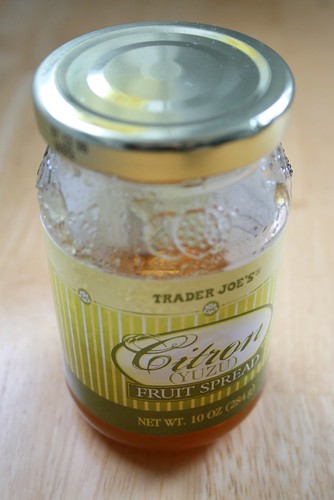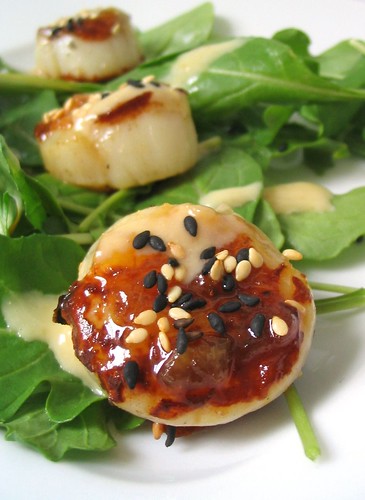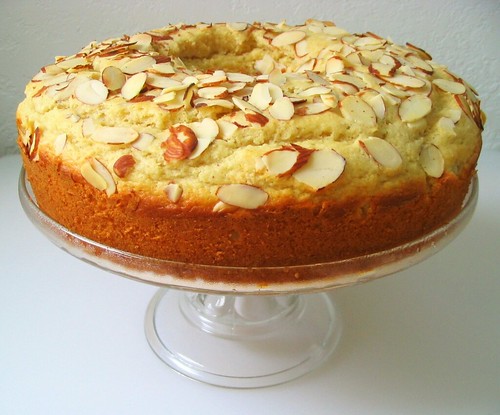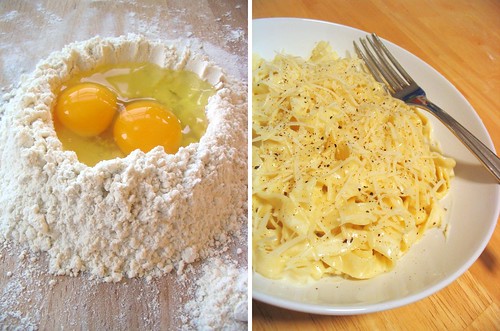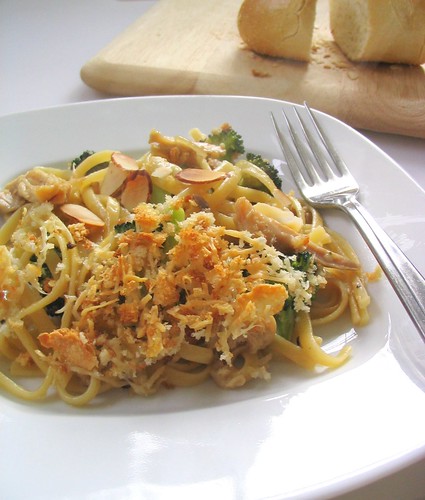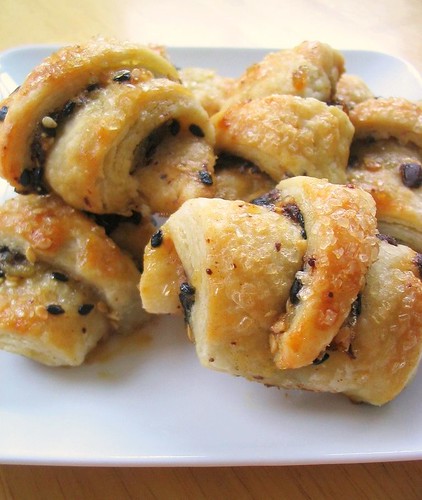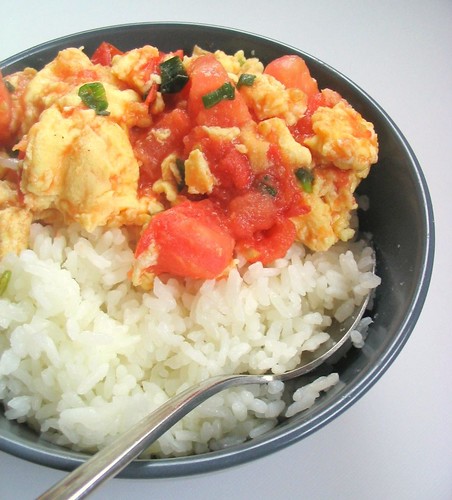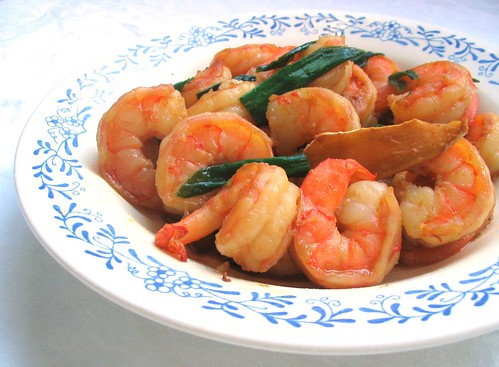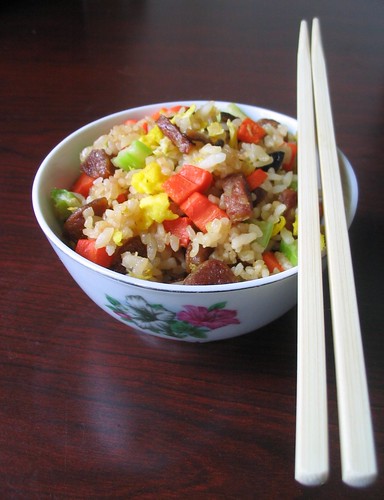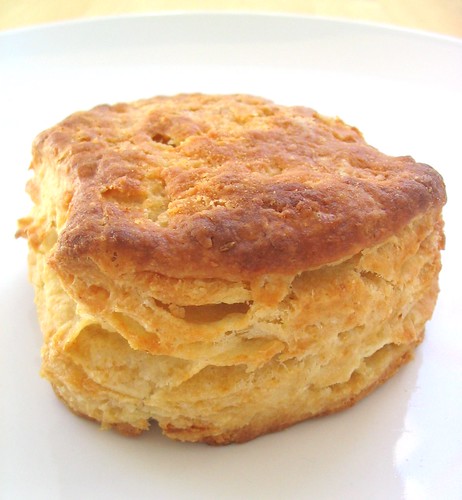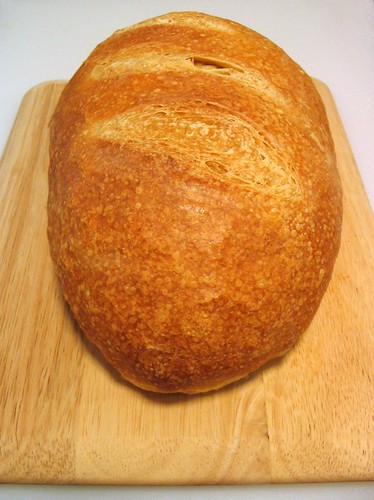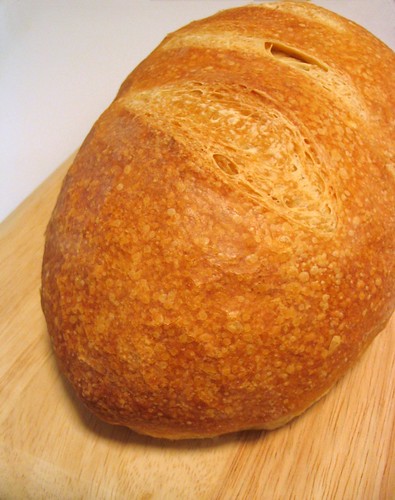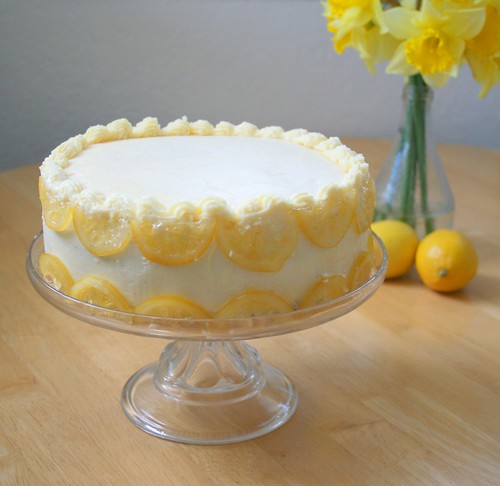
This year when Steven and I celebrate our birthdays together in July, I want to bake an extra special cake for the two of us. I don't make many layer cakes because I think they're too fussy to make and frost. I'm more of a muffin/quick bread kind of gal where I only need two bowls and don't have to bust out the KitchenAid. But I just can't resist the sheer beauty and elegance of a pristine white layer cake with buttercream frosting. There's really no substitute for a tall layer cake for a special occasion so I need to get as much practice in as possible before making the official birthday cake. I don't want to screw up like last year because screwing up a birthday cake is something I never want to do again. A white layer cake something I've always wanted to make, it's even on the list! So when Morven chose Dorie's Perfect Party Cake, I really couldn't have asked for a more perfect challenge.
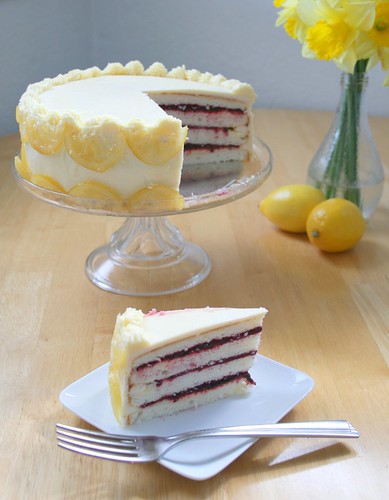
We had a lot of flexibility this month. We could play around with the cake flavor, the fillings, and the buttercream flavors, as long as we stuck to Dorie's basic recipe for the cake and frosting. At first glance, I was shocked by the amount of butter and sugar the entire recipe called for: a full POUND of butter and 2 1/2 cups of sugar (not counting the sugar in the preserves). Oh my! I didn't mess with the butter content but I simply couldn't put 1 1/2 cups of sugar in the cake alone! First I scaled down the recipe by 3/4 for my 8 inch cake pans and then decreased the sugar to 3/4 cups. I tasted a piece of the cake and it was sufficiently sweet so I can't imagine how cloyingly sweet it would have been if I had used the full amount. Many Daring Bakers had an issue with the cake not rising very much and I ended up with the same problem. I used cake flour and followed the instructions to a T and yet my cakes did not rise very much at all. After baking, the layers were about 1 inch high. I worried that my cake would end up like my first chiffon cake, dense and rubbery. I cut off a tiny piece and surprisingly, the interior of the cake was light and fluffy and tasted amazing, it just didn't rise very much. Odd but nothing catastrophic. I compared the recipe to a Cook's Illustrated recipe for white layer cake and found that CI used the same amount of flour, more butter, but also more baking powder and eggs whites. Maybe next time I should try adding a little more baking powder?
I knew I wanted to fill the cake with blackberry jam because I still had a huge gallon size bag of blackberries in the freezer from last summer that I needed to use (to make room for strawberry season). With my recently purchased shiny new food mill, I was able to make seedless jam since the first thing Steven did the last time I made jam was complain about all the seeds. I kept the lemon flavor in the cake because I think it pairs very well with blackberry. Instead of filling the cakes with buttercream and preserves, I boosted the lemony flavors of the cake by making Pierre Herme's lemon cream, also found in Dorie's book
The cake was absolutely delicious. The blackberry and lemon flavors were perfect together. The cake was light and the frosting was sinfully creamy. I had 2 slices and then I realized I had just ingested roughly half a stick of butter. Eek! Better not think about that and just concentrate on how yummy it is. This is definitely a cake I will be making over and over for special occasions; it really is the perfect party cake.
I think everyone did the cake a little differently this month so be sure to check out all the great cakes by going to the Daring Baker Blog Roll
Dorie's Perfect Party Cake: Lemon and Blackberry
from Dorie's Baking: From My Home to Yours
Lemon White Cake (for 2 9inch pans)
2 1/4 C cake flour
1 Tbsp baking powder 1/2 tsp salt
1 1/4 C whole milk or buttermilk (I used buttermilk, Dorie says she prefers this with the lemon)
4 large egg whites
1 1/2 cups sugar
2 tsp grated lemon zest
1 stick (or 1/2 C or 4 oz.) unsalted butter, at room temperature
1/2 tsp pure lemon extract (I used some vanilla extract)
for 2 8 inch pans
1 2/3 C cake flour
2 1/4 tsp baking powder
1/4 tsp salt
1 C whole milk or buttermilk (I used buttermilk, Dorie says she prefers this with the lemon)
3 large egg whites
1 1/4 C sugar (<- oh my god that is so much sugar, I used 3/4 C and the end result was fine)
1/4 tsp pure lemon extract (I used 1/2 tsp vanilla extract)
For the Buttercream (I made half of this recipe)
1 C sugar
4 large egg whites
3 sticks (12 ounces) unsalted butter, at room temperature
1/4 C fresh lemon juice (from 2 large lemons)
1 tsp pure vanilla extract
For Finishing
Lemon Cream Filling
2 tsp lemon zest
1/3 C sugar
2 large eggs
1/3 C lemon juice
8 (1/2 C or 4oz.) unsalted butter, very cold cut into 8 slices
Blackberry preserves (I had some homemade)
(I skipped the coconut on the outside)
Getting Ready
Preheat the oven to 350 degrees F and adjust a rack to the center position. Butter 2 8 inch (see adjusted recipe for 8 inch pan) or 9 inch cake pans and line the bottom with a round piece of parchment paper. Set aside.
Sift together the cake flour, baking powder, and salt. Whisk the egg whites with the whole milk or buttermilk. Put the sugar and lemon zest in a mixer bowl and rub them together with your fingers until the sugar feels moist and smells lemony.
Using either the whisk or paddle attachment, add the butter to the sugar and beat at medium speed until the sugar and butter is fluffy and light, 3 full minutes.
Beat in the extract, then lower the speed and add one third of the flour mixture. If you continue to mix on medium you'll get flour poofing out. The add half of the milk-egg mixture, then beat in the rest of the dry ingredients, mix until incorporated. Finally add the rest of the milk-egg mixture and beat for a full 2 minutes on medium speed to insure that the batter is homogeneous and aerated.
Divide the batter evenly between the two prepared pans and smooth out the top. Bake for 30 - 35 minutes (or 25 - 30 minutes for 8 inch cakes) or until a toothpick inserted in the center of the cake comes out clean. Check early.
Transfer the cakes to cooling racks and cool for 5 minutes, then remove them from the pans, peel off the parchment liner, and cool the cakes to room temperature (the cooled cake layers can be wrapped airtight and stored at room temperature overnight or frozen for up to two months).
To Make the Lemon Cream Filling
Bring a saucepan of water to a simmer. Place the sugar and lemon zest in a mixer bowl or heatproof bowl and rub the two together with your fingers until the sugar is moist and lemony. Whisk in the eggs, followed by the lemon juice. Place this ontop of the pan of simmering water and whisk constantly until the mixture reaches 180 degrees. As it approaches 180 degrees it will thicken considerably and the whisk will begin to leave tracks. Be very diligent about checking the temperature at this point. As soon as it reaches 180 degrees take it off heat. With a rubber spatula, scrape the mixture into a blender or food processor and let it cool until it is 140 degrees, this will take about 5 - 10 minutes. When the mixture has cooled, turn on the blender or food processor and with it running, add 3 1-tablespoon pieces of butter at a time, waiting until each addition has been incorporated before adding more. Blend for a full 2 minutes to emulsify and aerate the cream. Chill it in the fridge for 30 minutes before working with it. It will store overnight but you will need to let it warm up and soften before you can work with it.
To Make the Buttercream (I made half of the recipe)
Bring a saucepan of water to a simmer. Put the sugar and egg whites in a mixer bowl or heatproof bowl and place this bowl over the pan of simmering water. Whisk constantly until the mixture feels hot to the touch and the sugar has completely dissolved, about 3 minutes. The mixture will look white and shiny like marshmallow cream.
Using the whisk attachment, beat the meringue on medium speed until it is cool, about 5 minutes. It will become very white, fluffy, and sticky. Switch to the paddle attachment and add the butter one stick at a time. Since I was only using 1 1/2 sticks I added 1/2 a stick at each time. Beat the buttercream until it is thick, fluffy, and smooth. At some point it will curdle but don't worry, this is normally and with continued beating it will come together. Gradually add the lemon juice, making sure each addition is absorbed before adding more and finally add the vanilla. I don't know how well buttercream keeps in the fridge. It is best to work with it right after you make it. You can make the cakes and filling ahead of time, but make plan to make the buttercream and finish the cake on the same time. However after frosting the cake you can refrigerate it for 2 days or freeze it for a month.
To Assemble the Cake
Using a serrated knife, gently saw each cake layer into two layers. I like to first slice an outline around the perimeter of the cake then work my way in.
Dab a little frosting in the middle of a cardboard cake round or a cake plate and center the bottom layer cut side up. The frosting will act as the glue so the cake doesn't skid around when you are trying to frost it.
Spread 1/3 of the lemon cream on the layer. Then spread blackberry preserves on top. Place the top cake layer, cut side up. This way the domed top will be face down. Repeat with the spreading of the lemon cream and blackberry preserves. Now place the top layer of the second cake layer cut side up. Repeat with the filling, then filling place the final layer cut side down, the bottom of the cake layer should be facing up.
First apply a thin layer of frosting all around the cake as the crumb coat. This helps seals in all of the crumbs that you don't want on the outside of your cake. Then, use the remaining buttercream to evenly frost the outside of the cake. If you have any leftover frosting you can pipe designs on the outside. I made some candied lemon slices for the outside of the cake.
Storing
The cake is best the day it is made, but it will keep well covered and refrigerated for up to two days or you can freeze the cake (freeze it solid then wrap it well) for up to two months (defrost it well wrapped in the fridge overnight). Bring it to room temperature before serving. I find that the buttercream tastes the fluffiest the day it's made.
Playing Around
You can use whatever flavors or fillings your heart desires and decorate the cake however you like. In the original recipe, Dorie covered the outside of the cake with coconut but but you can also used grated chocolate, chopped nuts, or fresh berries.

